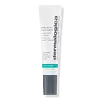What's inside
What's inside
 Key Ingredients
Key Ingredients

 Benefits
Benefits

 Concerns
Concerns

 Ingredients Side-by-side
Ingredients Side-by-side

Sulfur 5%
AntiseborrhoeicWater
Skin ConditioningNiacinamide
SmoothingPropanediol
SolventGlycerin
HumectantAcacia Senegal Gum
MaskingPolyacrylate Crosspolymer-6
Emulsion StabilisingHydroxyacetophenone
AntioxidantLactic Acid
BufferingPelargonium Graveolens Flower Oil
MaskingLavandula Hybrida Oil
EmollientLavandula Angustifolia Oil
MaskingCitrus Limon Peel Oil
MaskingSalvia Sclarea Oil
MaskingAloe Barbadensis Leaf Extract
EmollientCitrus Aurantium Dulcis Peel Oil
MaskingPunica Granatum Pericarp Extract
Skin ConditioningRosmarinus Officinalis Leaf Oil
MaskingMyristyl Myristate
EmollientBeta-Glucan
Skin ConditioningBiosaccharide Gum-1
HumectantGlyceryl Stearate
EmollientMaltodextrin
AbsorbentCaprylyl Glycol
EmollientPolylysine
Cetearyl Alcohol
Emollient1,2-Hexanediol
Skin ConditioningSodium Acrylates Crosspolymer-2
AbsorbentCeteareth-12
EmulsifyingTitanium Dioxide
Cosmetic ColorantTetrasodium Glutamate Diacetate
Potassium Cetyl Phosphate
EmulsifyingSodium Hydroxide
BufferingDimethyl Isosorbide
SolventThymol
AntimicrobialTerpineol
MaskingAlgin
MaskingCamphor
MaskingO-Cymen-5-Ol
AntimicrobialSodium Benzoate
MaskingLimonene
PerfumingLinalool
PerfumingCitronellol
PerfumingGeraniol
PerfumingSulfur 5%, Water, Niacinamide, Propanediol, Glycerin, Acacia Senegal Gum, Polyacrylate Crosspolymer-6, Hydroxyacetophenone, Lactic Acid, Pelargonium Graveolens Flower Oil, Lavandula Hybrida Oil, Lavandula Angustifolia Oil, Citrus Limon Peel Oil, Salvia Sclarea Oil, Aloe Barbadensis Leaf Extract, Citrus Aurantium Dulcis Peel Oil, Punica Granatum Pericarp Extract, Rosmarinus Officinalis Leaf Oil, Myristyl Myristate, Beta-Glucan, Biosaccharide Gum-1, Glyceryl Stearate, Maltodextrin, Caprylyl Glycol, Polylysine, Cetearyl Alcohol, 1,2-Hexanediol, Sodium Acrylates Crosspolymer-2, Ceteareth-12, Titanium Dioxide, Tetrasodium Glutamate Diacetate, Potassium Cetyl Phosphate, Sodium Hydroxide, Dimethyl Isosorbide, Thymol, Terpineol, Algin, Camphor, O-Cymen-5-Ol, Sodium Benzoate, Limonene, Linalool, Citronellol, Geraniol
Water
Skin ConditioningGlycolic Acid
BufferingSodium Citrate
BufferingPropanediol
SolventButylene Glycol
HumectantHydroxyethylcellulose
Emulsion StabilisingAgave Tequilana Leaf Extract
AstringentAllantoin
Skin ConditioningAloe Barbadensis Flower Extract
EmollientCamellia Sinensis Leaf Extract
AntimicrobialCentella Asiatica Extract
CleansingChamomilla Recutita Flower Extract
MaskingChlorphenesin
AntimicrobialCoccinia Indica Fruit Extract
Skin ConditioningCorallina Officinalis Extract
Skin ConditioningCurcuma Longa Root Extract
Masking1,2-Hexanediol
Skin ConditioningEthylhexylglycerin
Skin ConditioningGlyceryl Caprylate
EmollientGlycyrrhiza Glabra Root Extract
BleachingHydrolyzed Hyaluronic Acid
HumectantMelia Azadirachta Flower Extract
Skin ConditioningMelia Azadirachta Leaf Extract
Skin ConditioningOcimum Sanctum Leaf Extract
Skin ConditioningPanthenol
Skin ConditioningPantolactone
HumectantPhenoxyethanol
PreservativePolygonum Cuspidatum Root Extract
AntioxidantRosmarinus Officinalis Leaf Extract
AntimicrobialSalicylic Acid
MaskingScutellaria Baicalensis Root Extract
AstringentSodium Acetylated Hyaluronate
HumectantSodium Hyaluronate
HumectantSolanum Melongena Fruit Extract
Skin ConditioningTrisodium Ethylenediamine Disuccinate
Xanthan Gum
EmulsifyingPolyglyceryl-10 Caprylate/Caprate
EmulsifyingPolyglyceryl-10 Laurate
Skin ConditioningLavandula Angustifolia Oil
MaskingPelargonium Graveolens Flower Oil
MaskingWater, Glycolic Acid, Sodium Citrate, Propanediol, Butylene Glycol, Hydroxyethylcellulose, Agave Tequilana Leaf Extract, Allantoin, Aloe Barbadensis Flower Extract, Camellia Sinensis Leaf Extract, Centella Asiatica Extract, Chamomilla Recutita Flower Extract, Chlorphenesin, Coccinia Indica Fruit Extract, Corallina Officinalis Extract, Curcuma Longa Root Extract, 1,2-Hexanediol, Ethylhexylglycerin, Glyceryl Caprylate, Glycyrrhiza Glabra Root Extract, Hydrolyzed Hyaluronic Acid, Melia Azadirachta Flower Extract, Melia Azadirachta Leaf Extract, Ocimum Sanctum Leaf Extract, Panthenol, Pantolactone, Phenoxyethanol, Polygonum Cuspidatum Root Extract, Rosmarinus Officinalis Leaf Extract, Salicylic Acid, Scutellaria Baicalensis Root Extract, Sodium Acetylated Hyaluronate, Sodium Hyaluronate, Solanum Melongena Fruit Extract, Trisodium Ethylenediamine Disuccinate, Xanthan Gum, Polyglyceryl-10 Caprylate/Caprate, Polyglyceryl-10 Laurate, Lavandula Angustifolia Oil, Pelargonium Graveolens Flower Oil
 Reviews
Reviews

Ingredients Explained
These ingredients are found in both products.
Ingredients higher up in an ingredient list are typically present in a larger amount.
1,2-Hexanediol is a synthetic liquid and another multi-functional powerhouse.
It is a:
- Humectant, drawing moisture into the skin
- Emollient, helping to soften skin
- Solvent, dispersing and stabilizing formulas
- Preservative booster, enhancing the antimicrobial activity of other preservatives
Lavandula Angustifolia Oil is more commonly known as lavender essential oil. It is considered a fragrancing ingredient.
Lavender imparts a famous scent. While the smell is lovely, this ingredient and may sensitize skin in topical products. This is because about 85% of the oil is made up of linalool and linalyl acetate.
When exposed to air, these two compounds become strong allergens. This ingredient exhibits cytotoxicity at low concentrations; amounts of 0.25% have been shown to damage skin cells.
A study from Japan found this ingredient caused lavender sensitivity after widespread exposure.
Lavender essential oil has some antimicrobial, antibacterial, and anti-inflammatory properties. However, the cons of this ingredient may outweight the pros.
More research is needed to confirm lavender essential oil's effects when used in aromatherapy.
Lavandula Angustifolia is known as the English Lavender and famous for creating purple fields in Provence, France.
Learn more about Lavandula Angustifolia OilPelargonium Graveolens Flower Oil is the pressed oil of the Rose Geranium plant. It is volatile, meaning it evaporates off the skin.
Fragrant components of Rose Geranium include citronellol and geraniol. These may cause allergies and skin-sensitivity. We recommend speaking with a professional if you have any concerns.
The scent of Rose Geranium closely resembles traditional roses.
Learn more about Pelargonium Graveolens Flower OilPropanediol is an all-star ingredient. It softens, hydrates, and smooths the skin.
It’s often used to:
Propanediol is not likely to cause sensitivity and considered safe to use. It is derived from corn or petroleum with a clear color and no scent.
Learn more about PropanediolWater. It's the most common cosmetic ingredient of all. You'll usually see it at the top of ingredient lists, meaning that it makes up the largest part of the product.
So why is it so popular? Water most often acts as a solvent - this means that it helps dissolve other ingredients into the formulation.
You'll also recognize water as that liquid we all need to stay alive. If you see this, drink a glass of water. Stay hydrated!
Learn more about Water